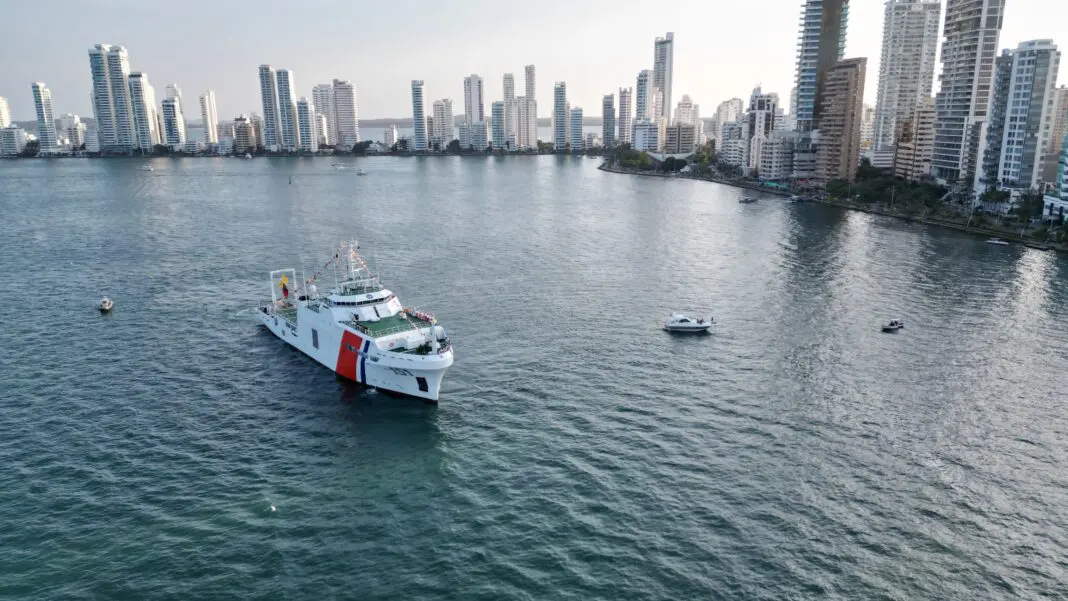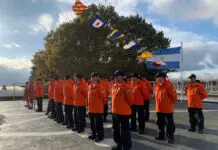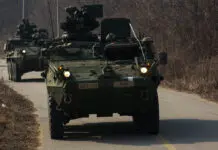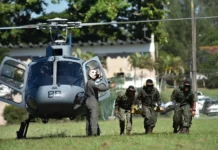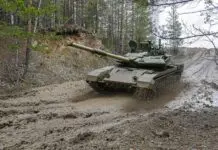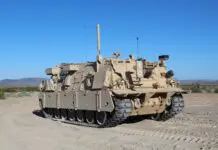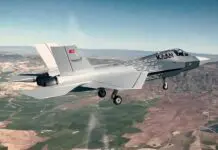In a ceremony led by Captain Jahir Andrés Robledo, Commander of the Simón Bolívar ship of the Colombian Navy, the Antarctic expedition disembarked at the port of Cartagena. The disembarkation, led in formation by Captain Alexis Grattz Bonilla, expedition cruise chief and second commander of the ship, included the Chief of Operations, the expedition’s doctor, the Aeronaval component’s pilot crew, research divers including the first woman to dive in icy waters, the engineering department, communications, deck, and laboratory personnel, kitchen staff, and participants from the National Army. Among the civilian personnel were researchers who conducted all the scientific tests of the expedition, Ecopetrol researchers who conducted greenhouse gas research, and members of the General Maritime Directorate.
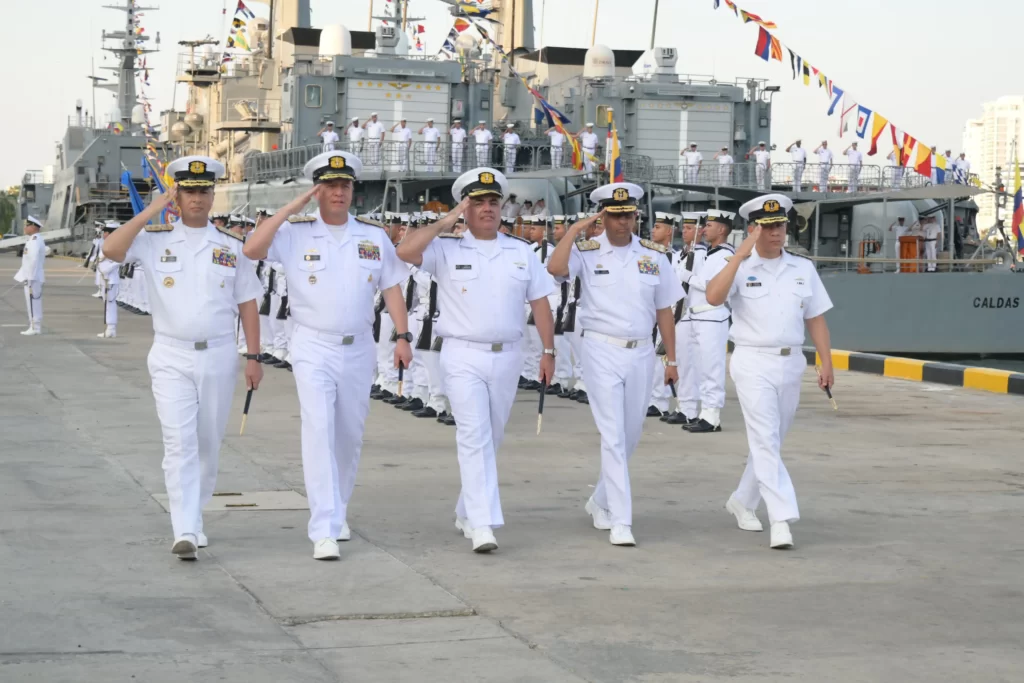
The ship arrived at its home port, which welcomed them after more than 13,000 nautical miles traveled in 121 days of navigation, achieving important milestones for the Republic’s Navy, such as Colombia’s inclusion in the Antarctic Treaty, by meeting the requirements of said instrument to access as a consultative country.
The Antarctic expedition was carried out with the support and participation of Argentina, Chile, the United States, Ecuador, Turkey, Brazil, Chile, Spain, and Uruguay. Eight polar bases were visited, “achieving an understanding of their organization, operational dynamics, and scientific capabilities”; a milestone was the stay of Corvette Captain Maritza Moreno and Seaman First Class Sebastián Rueda of the Colombian Navy for 23 days at the Ecuadorian Antarctic base “Pedro Vicente Maldonado.” Ports visited included Valparaíso and Punta Arenas in Chile, Callao in Peru, and Guayaquil in Ecuador, where the ship and its capabilities were showcased to naval authorities, with over 7,000 visitors.
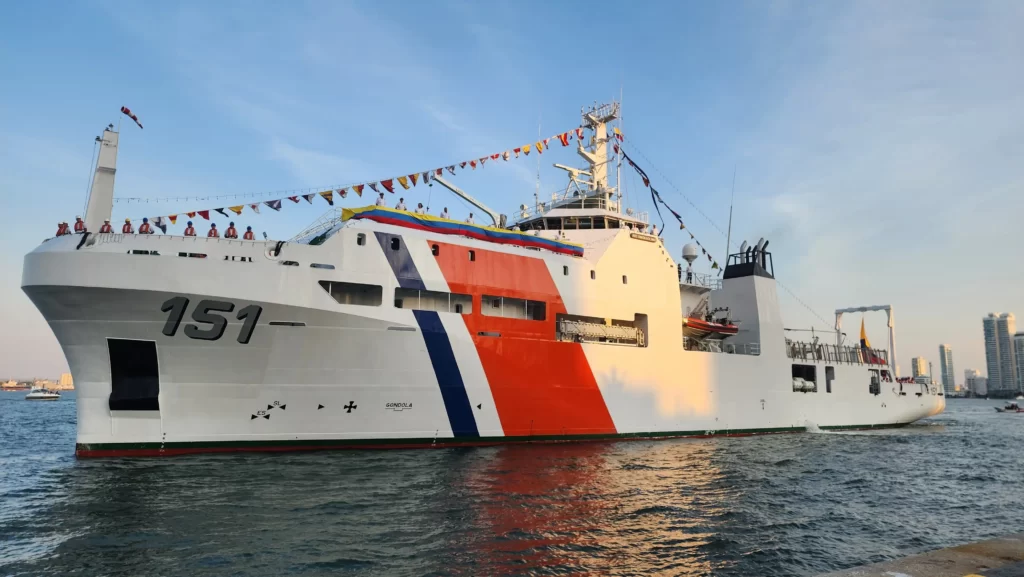
Perhaps the most important announcement was the new campaign in which the ARC Simón Bolívar will embark on the “Corazón del Galeón San José”, aiming to conduct explorations for “protection and preservation.” Once maintenance, provisioning, and inclusion of new personnel are completed, the ship will join this campaign. Regarding this, the ship’s Commander stated: “the ship remains ready and prepared to continue contributing to research and science. As part of the expedition for the protection and preservation of the San José Galleon, this ship will continue in that line as part of the support that other ships of our Navy will provide, especially the ARC “Caribe,” and later we will have other scientific activities focused on maritime signaling, oceanographic and hydrographic research in the Colombian Caribbean Sea.”
Among other dignitaries receiving the unit were Commander of the National Navy Francisco Hernando Cubides Granados, Yesenia Olaya Requene Minister of Science, Technology, and Innovation, retired Admiral Manuel Avendaño Galvis former commander of the National Navy, Admiral José Joaquín Amézquita García head of the Joint Command of the Armed Forces, Vice Admiral Luis Fernando Márquez Veloza president of Cotecmar Shipyard, Rear Admiral Camilo Ernesto Segovia Moreno commander of the Caribbean Naval Force, Luis Suarez Soto Deputy Minister of Defense for Strategy, and Ana Catalina Cano Londoño Deputy Minister of Veterans and the business social group.
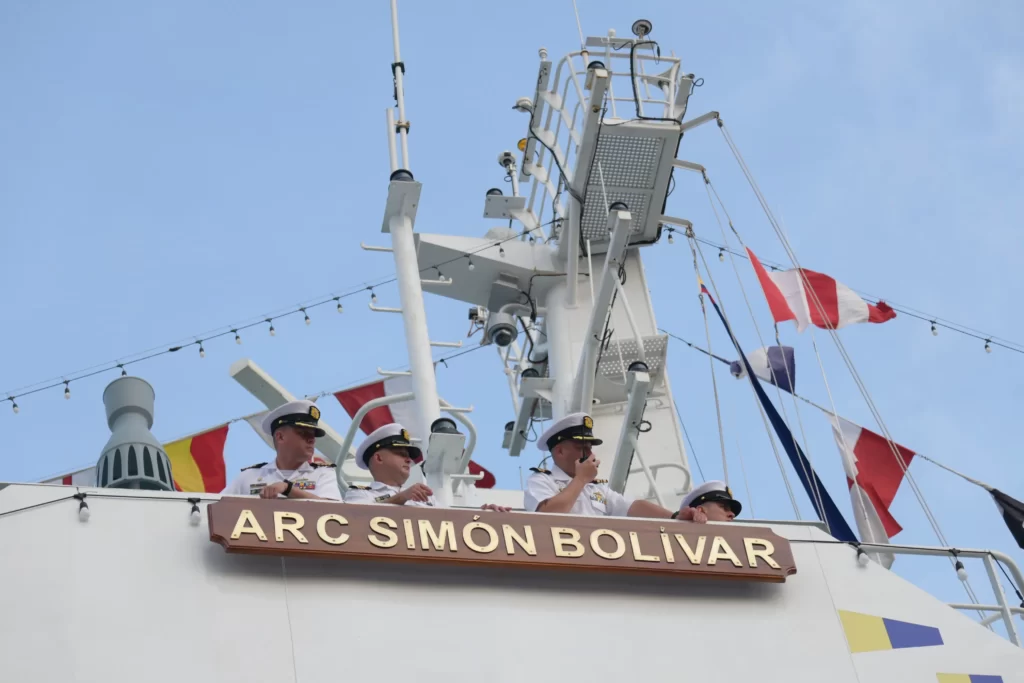
Congratulations to our national sibling and success in their new challenge, the protection of the submerged San José Galleon archaeological heritage.
You may also like: Getting to know the new Colombian-made 26 FT MILITAR motorboat: interview with Andrés Giraldo, General Manager of Mar 10


